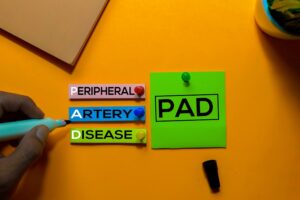
Peripheral Artery Disease (PAD) is a condition that affects millions of people globally. It occurs due to the buildup of fatty deposits in the arterial walls that provide blood supply to the lower extremities, causing reduced blood flow. As PAD progresses, it can lead to serious complications, such as ulcers, gangrene, and limb amputation.
Fortunately, with the latest advancements in medical technology, there are now various treatments available for PAD. As a patient, it’s essential to be aware of these treatments so that you can make an informed decision about your health and improve your quality of life. In this blog post, we will discuss the latest innovations in PAD treatment and how they can benefit you.
Medications: One of the first lines of treatment for PAD is medication. The primary goal of medication is to prevent the formation of blood clots and reduce cholesterol levels that can cause plaque buildup in the arteries. There are various medications available, such as statins, aspirin, and clopidogrel, which have proven effective in managing PAD symptoms.
Lifestyle Changes: PAD is a condition that often develops due to unhealthy lifestyle habits such as smoking, an unhealthy diet and lack of exercise. Therefore, making positive lifestyle changes is crucial to improve PAD symptoms. Engaging in regular physical activity, reducing stress levels, losing weight and quitting smoking can significantly help improve blood circulation and reduce PAD symptoms.
Angioplasty: Angioplasty is a minimally invasive procedure that involves inserting a balloon catheter into the narrowed artery to open it up. Once the balloon is inflated, the artery widens, and the blockage is removed, and a stent placed in the artery to hold it open. This procedure is an effective way to restore blood flow and can provide significant relief from PAD symptoms.
Atherectomy: Atherectomy is a newer technique used to remove plaque from the arterial walls. This procedure usually involves the use of a small catheter with a rotating blade or laser that effectively removes the plaque. Atherectomy is typically performed under local anesthesia and has a faster recovery time compared to other PAD treatments.
Stem Cell Therapy: Stem cell therapy is an innovative treatment that involves injecting a person’s own stem cells to repair damaged arterial walls and improve blood flow to the affected area. This treatment is still in its early stages of development, but initial studies have shown that it can significantly improve PAD symptoms and may offer long-lasting benefits.
Peripheral Artery Disease can significantly impact a person’s quality of life, but there are now various PAD treatments that can help mitigate its symptoms. These treatments range from lifestyle changes and medication to advanced procedures such as angioplasty and atherectomy. Ultimately, understanding the various peripheral artery disease treatment Chicago area options available is the first step to improving your quality of life with PAD. Consulting with a vascular specialist and creating an individualized treatment plan can help identify the most effective treatment options for you, ensuring that you receive the best possible care.
